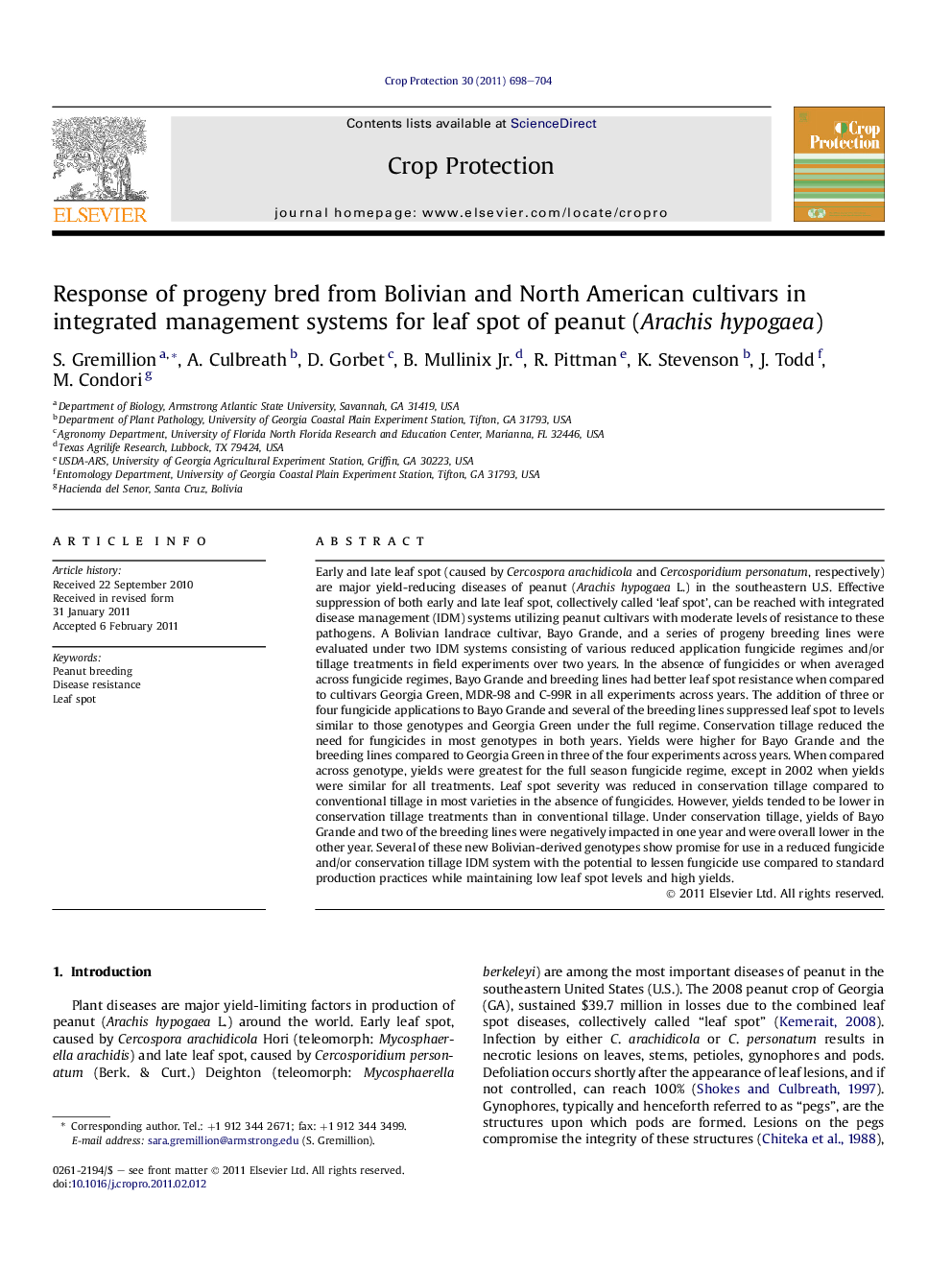| کد مقاله | کد نشریه | سال انتشار | مقاله انگلیسی | نسخه تمام متن |
|---|---|---|---|---|
| 4507064 | 1321338 | 2011 | 7 صفحه PDF | دانلود رایگان |

Early and late leaf spot (caused by Cercospora arachidicola and Cercosporidium personatum, respectively) are major yield-reducing diseases of peanut (Arachis hypogaea L.) in the southeastern U.S. Effective suppression of both early and late leaf spot, collectively called ‘leaf spot’, can be reached with integrated disease management (IDM) systems utilizing peanut cultivars with moderate levels of resistance to these pathogens. A Bolivian landrace cultivar, Bayo Grande, and a series of progeny breeding lines were evaluated under two IDM systems consisting of various reduced application fungicide regimes and/or tillage treatments in field experiments over two years. In the absence of fungicides or when averaged across fungicide regimes, Bayo Grande and breeding lines had better leaf spot resistance when compared to cultivars Georgia Green, MDR-98 and C-99R in all experiments across years. The addition of three or four fungicide applications to Bayo Grande and several of the breeding lines suppressed leaf spot to levels similar to those genotypes and Georgia Green under the full regime. Conservation tillage reduced the need for fungicides in most genotypes in both years. Yields were higher for Bayo Grande and the breeding lines compared to Georgia Green in three of the four experiments across years. When compared across genotype, yields were greatest for the full season fungicide regime, except in 2002 when yields were similar for all treatments. Leaf spot severity was reduced in conservation tillage compared to conventional tillage in most varieties in the absence of fungicides. However, yields tended to be lower in conservation tillage treatments than in conventional tillage. Under conservation tillage, yields of Bayo Grande and two of the breeding lines were negatively impacted in one year and were overall lower in the other year. Several of these new Bolivian-derived genotypes show promise for use in a reduced fungicide and/or conservation tillage IDM system with the potential to lessen fungicide use compared to standard production practices while maintaining low leaf spot levels and high yields.
► New peanut breeding lines combine Bolivian and U.S. host resistance to reduce leaf spot of peanut.
► New peanut breeding lines, bred from Bolivian and U.S. parents, display yields comparable to or higher than yields of the standard variety of the southeastern U.S.
► An integrated disease management system of conservation tillage and new, resistant breeding lines control leaf spot pathogens of peanut with less need for fungicides, but can have negative effects on yield.
Journal: Crop Protection - Volume 30, Issue 6, June 2011, Pages 698–704